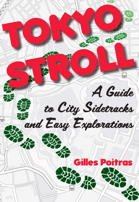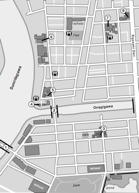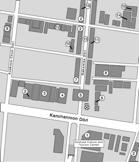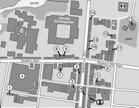











Tokyo Stroll Supplement: Fuchū

This page is for locations in the Fuchū-shi area of Tokyo. This area is not part of my book Tokyo Stroll.
For information on Tokyo Stroll and this web supplement see Tokyo Stroll Supplement home page
For users of the Organic Maps, Maps.Me and Google Maps apps the items below have bookmarks you can import into those apps to make navigation easier.
Instructions and links are on the Viewing Locations in Organic Maps, Maps.Me, Google Maps, or Google Earth page.
Some entries on this page may include a note that says "Description to be added soon ." These entries are for items I felt should be listed even if the description is not ready to assist those who wish to plan a trip. When possible I included a link to an official web page, I suggest also doing web searchs for more information.
Fuchū Shi (府中市)
Official pages for each of the cities and towns of will have sections of interest to visitors. These will likely be labeled as dealing with culture, tourism, or events.
Fuchū Shi official site: https://www.city.fuchu.tokyo.jp
Fuchū Art Museum / Fuchū Shin Bijutsukan (府中市美術館)
An art museum located in Fuchū no Mori Park which opened in October 2000. The art collection spans from the Edo Perion to modern times, exhibits change several times a year. The first floor has the museum shop, a cafe, an art library, and workshop areas, the second floor has the exhibition rooms.
NEAREST TRAIN/SUBWAY STATIONS:
Walkable from: Higashi-fuchū Station (Keiō Line and Keiō Keibajō Line).
From: Fuchū Station (Keiō Line), Kokubunji Station (JR Chūō Line) or Musashi-Koganei Station (JR Chūō Line) it may be best to take a bus.
CLOSED: Mondays if Monday is a holiday, the museum will be open and close on Tuesday. New Years and between exhibitions
WEB: https://www.city.Fuchū.tokyo.jp/art/
Fuchū City Local Forest Museum / Fuchū-shi kyōdo-no-mori hakubutsukan (府中市郷土の森博物館)
Two locations that share the same larger area. Originally established in 1969 as the Fuchū City Local Museum, it was renamed in 1987 after the establishment of a forested area. Today the heavily forested 14-hectare park includes some 1,100 plum trees of 60 varieties. Each February or March a plum festival is held when the trees blossom. In June to mid-July there is a hydrangea festival with over 30 varieties. The park includes ponds and streams. The northern portion includes many historical buildings such as old farmhouses, merchant townhouses, a water mill, and a museum with in formation on the history of Fuchū. There are also teahouses where you can relax. South of the park is a large grassy area overlooking the Tamagawa with cherry trees, some picnic tables, a BBQ area, and a camping area.
NEAREST TRAIN/SUBWAY STATIONS: Fuchū-Hommachi Station (JR Musashino Line and JR Nambu Line), and Bubaigawara Station (Keiō Line and JR Nambu Line)
ADMISSION: A small fee is charged for admission, the park is open 9 am - 5 pm.
CLOSED: Mondays, open if Monday is a holiday and then closed on Tuesday, closed on the New Year holiday.
WEB: https://www.fuchu-cpf.or.jp/museum/index.html
Fuchū no Mori Park / Fuchū no Mori Kōen (府中の森公園)
This park opened on June 1, 1991 on the site of a former military facility. Most of the site is forested with a variety of trees such as zelkova, Himalayan cedar, Sawtooth oak,, konara oak, orange osmanthus, camellia, and cherry. The sport facilities include a children's playground, a splashing pond for children, a soccer field / hockey court, small baseball diamond, tennis courts, and a gateball court. There is a Japanese garden, a large grassy area, hills, several ponds and a stream as well as sculptures by local artists. At the north end of the park is the Fuchū Art Museum.
NEAREST TRAIN/SUBWAY STATION: Higashi-Fuchū Station (Keiō line), or by bus from Musashi-Koganei (JR Chūō line).
WEB: https://www.tokyo-park.or.jp/park/fuchunomori/
Sengenyama Park / Sengenyama Kōen (浅間山公園)
Sengen Jinja / Sengen Jinja (浅間神社)
A park containing Sengenyama, a three peaked hill formed by erosion on the Tama Plateau. This park opened in 1970 on land that had once been confiscated from the owners by the imperial government in WWII to be used to store munitions. Most of the park is heavily forested with some 5,000 trees including: kousa dogwood, several species of oak, at lease two types of blossoming cherry, This is the only place that wild Musashinokisuge daylilies grow, mid May is the best time to see them blossom. There are also several species of rare protected plants growing in the park such as Cephalanthera falcata and Cephalanthera erecta, Chloranthus japonicus. A Shintō shrine devoted to Mount Fuji, Sengen Jinja, is on north east part of the park on Doyama, the tallest of the three peaks of Sengenyama. The shrine approach is from the south via the otokozaka slope, or from the west on the gentler onnazaka slope. Another peak, Maeyama, has a good view of Mount Fuji and is considered one of the 100 top place to observe the mountain in the Kantō area. The best views are on clear winter days. The easternmost part of the park complex is located just across a suspension bridge over Sengenyama Dōri. If you follow the trail from the bridge through the forest you will reach the western part of Tama Cemetery.
NEAREST TRAIN/SUBWAY STATION: Tama Station (Seibu Tamagawa Line)
EVENTS: The Kisuge Festival is held in late April or Early May each year by nature conservation groups.
WEB: http://musashinoparks.com/kouen/sengenyama/
PDF Map: https://www.kensetsu.metro.tokyo.lg.jp/content/000007595.pdf
Tama Cemetery / Tama Reien (多磨霊園)
The largest cemetery in Japan, founded in 1923 as the Tama Graveyard, it was renamed the Tama Cemetery in 1935. The cemetery is so large the grounds are divided between Fuchū-shi and Koganei-shi. The cemetery ran out of available plots in 1963 and a columbarium, Mita Hall, was added in 1993. The grounds are heavily forested with a mix of western and Japanese style grave markers. This is a popular location for the graves of high ranking military officers and politicians such as Admiral Tōgō Heihachirō, the naval war hero. Many writers and artists buried here include Okamoto Tarō, Mishima Yukio, Edogawa Ranpo, Yoshikawa Eiji, and Hasegawa Machiko creator of the famous manga series Sazae-san. Actors like Soga Machiko and Yamada Yasuo are also buried here. Interestingly enough the spy Richard Sorge who was executed by the Japanese in 1944 is buried in Tama Cemetery. Another famous immigrant is exiled Indian revolutionary Rash Behari Bose who introduced Indian style curry to Japan at his in-law's restaurant Nakamuraya (Tokyo Stroll, Shinjuku Station Area Chapter, page 379), he is buried with his wife Toshiko in the foreigner section. Some of the structures in the cemetery have bullet holes from being strafed as the grounds were used to repair fighter planes in WWII.
NEAREST TRAIN/SUBWAY STATION: Tama Station (Seibu Tamagawa Line)
ACCESS: The main gate is at the south east corner of the cemetery, there are many other gates along the perimeter of the grounds.
WEB: https://www.tokyo-park.or.jp/reien/tama/
Back to the Tokyo Stroll Supplement home page - Privacy Notice - Back to Gilles' home page
Created July 23, 2024 | Content last updated July 29, 2025